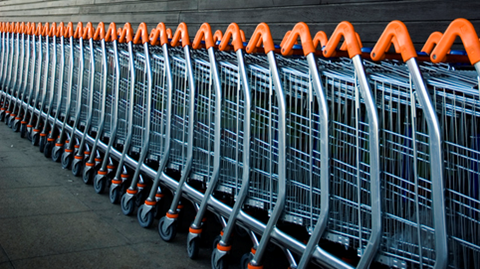The retail sector has become one of the largest renters of warehouse and logistics properties in Germany, according to the latest analysis from German industrial consultant Realogis.

In 2021, retail companies signed new contracts for more than 1.35 million m2 of rental and owner-occupied space in Germany’s top eight logistics locations alone (Hamburg, Berlin, Ruhr region, Düsseldorf, Cologne, Frankfurt, Stuttgart and Munich).
This accounts for 35% of total take-up in the top 8 locations, which amounted to 3.86 million m2 at the end of last year.
Compared to the same period of the previous year, retail companies thus increased their take-up by 7% in 2021 compared to 2020 (take-up: 1.264 million m2) and by 42% in 2020 compared to 2019 (take-up: 887,192 m2).
'In the eight largest German metropolitan areas, more than one in three square metres in warehouse and logistics properties went to traditional retail or e-commerce companies in 2021,' said Florian Stork, Realogis managing director responsible for Munich-Germany South.
'This demonstrates the important role warehouse and logistics properties play in ensuring a smooth flow of goods, both between the retail company and its suppliers and to its customers,' added Julian Petri, Realogis managing director for the Rhine-Main area.
'Retail is the greatest driver of demand for space. Traditional retail is applying its processes in more appropriate, new logistics properties based on its digitalisation strategy. Players dealing only with e-commerce are claiming a large share of the market as a result of the boom in online ordering,' said Bülent Alemdag, Realogis managing director for the top markets in NRW.
The largest individual market for warehouse and logistics space in 2021 was the Ruhr region at 379,500 m2, representing 55% of total take-up for industrial and logistics space in the entire Ruhr area.
Frankfurt was the second-largest individual market out of the metropolitan areas analysed and accounted for 255,800 m2, 39% of the market’s total take-up. It was followed by Berlin at 193,000 m2 (30.9%), Cologne at 146,450 m2 (46.8%) and Hamburg at 144,900 m2 (23%).
Düsseldorf (108,500 m2 (31%)), Munich (78,100 m2 (25.9%)) and Stuttgart (46,843 m2 (15.8%)) occupy the bottom three spots.
As well as the Ruhr region, retail also topped the sector ranking in the top eight markets of Cologne in 2021, accounting for greater take-up than the distribution/logistics and industry sectors. Following a weak 2019, when retail accumulated just 28,095 m2, the Cologne market quadrupled its take-up to 117,500 m2 in 2020 and increased this by another 24.6% to 146,450 m2 in 2021.
Added Alemdag: 'The German e-commerce market is still some way from reaching its full potential, especially compared to other international markets. This means that retail companies and e-commerce platforms have the potential to generate high growth in the future.'










